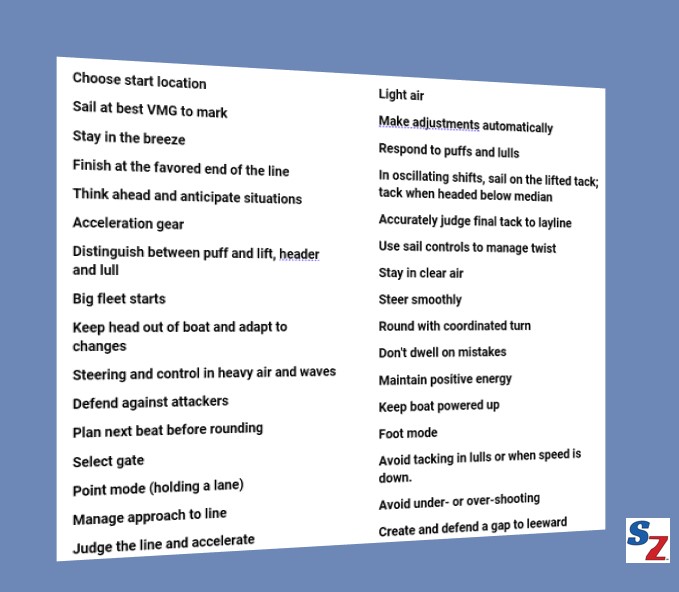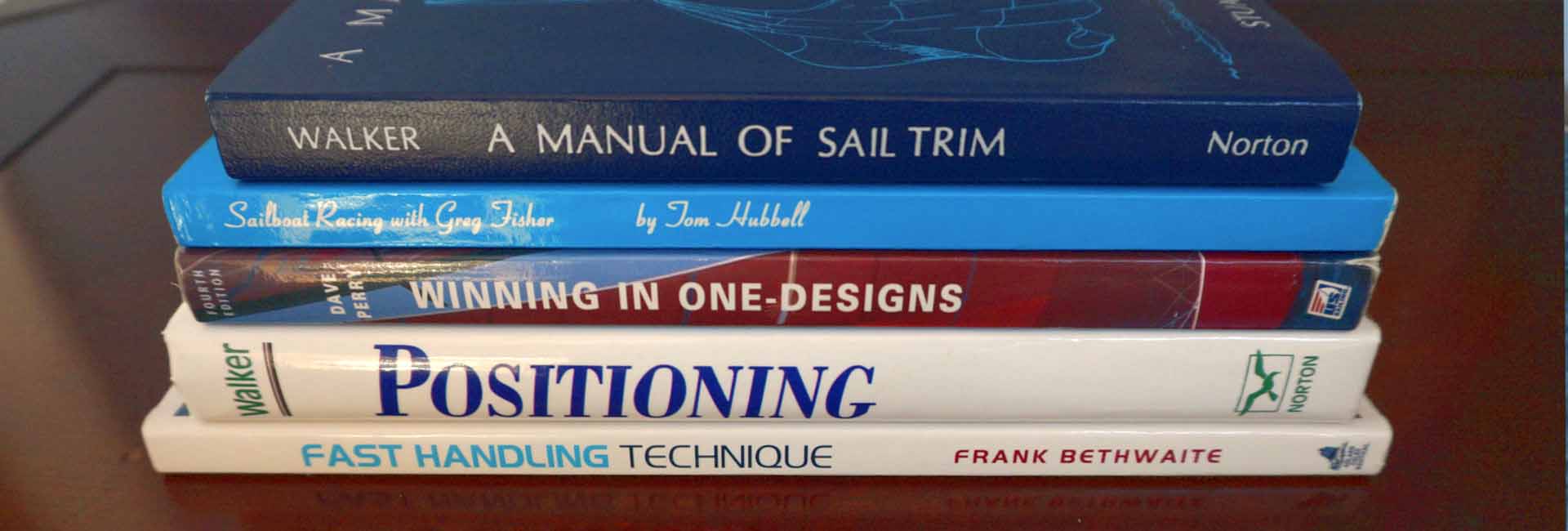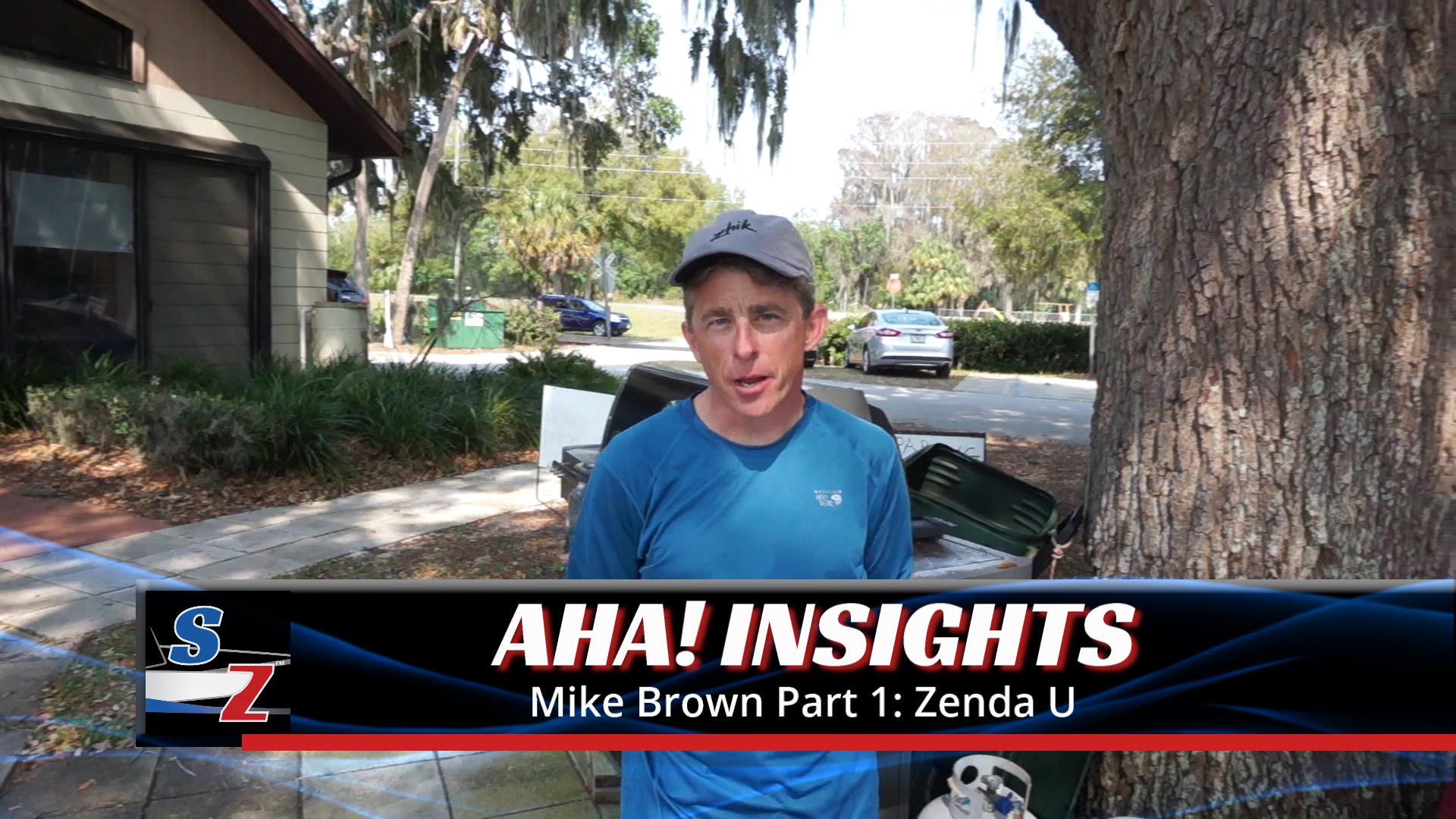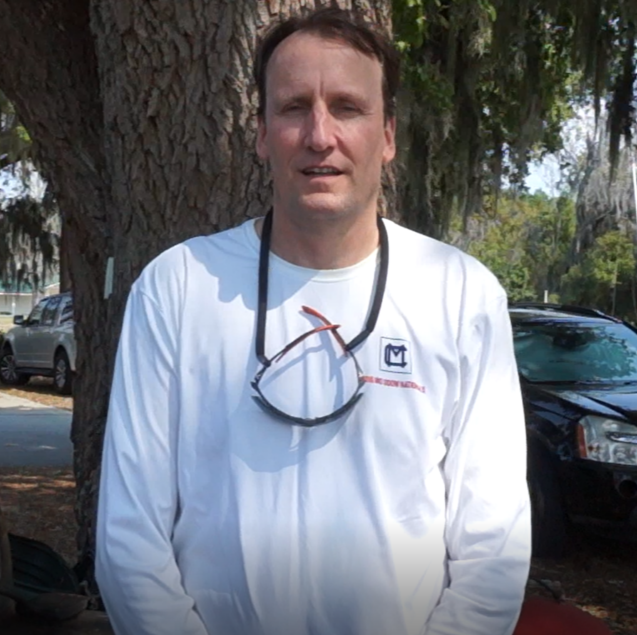What are the most common racing skills for improvement? In our post Racing Skills Evaluation: Develop a Self-Improvement Plan, we offered a free self-evaluation survey of 16 skills areas divided into over 80 subskills. Based on the results so far, we list the top ten skills for improvement. We also list resources to improve in these areas.
We encourage you to take this survey – our respondents have found it comprehensive and valuable in developing a self-improvement plan. We’ll send you a printout of your responses along with tips for a self-improvement plan. (You must be registered as a SailZing user to take the survey.)
Ten Common Racing Skills for Improvement
#1. Downwind sailing and gybes in heavy air and waves
No surprise that this is the winner. If you don’t enjoy capsizing, you’re not inclined to go out and practice in these conditions. For help on this topic, see our posts tagged with heavy air and waves.
#2. Choosing a starting location
With so many factors to consider, you can see why this skill ranks high. See our posts tagged with where to start.
#3. Sailing at the best VMG downwind
Many sailors don’t work the boat enough downwind. “Up in the lulls, down in the puffs” is a good rule of thumb but is oversimplified. See our posts tagged with VMG.
#4. Staying in the breeze downwind
Another area where most of us don’t work the boat hard enough. See our posts tagged with staying in breeze downwind.
#5. Finishing at the favored end of the line
Near the end of the race, you can get tired and forget to focus on where to finish. The visual cues are difficult to interpret. See our post on Finishing Strategy: Favored End and Laylines.
#6. Thinking ahead and anticipating situations
Someone told me that the top sailors are playing chess on the water, while the rest of us are playing checkers. See our posts on Make Better Decisions: Speed and Smarts and Racing Strategy: ILYA Fast Forward Seminar (section on countdown to decisions).
#7. Accelerating gear for starts and after tacks
Gordy Bowers says that the last 5-10 seconds before the start are the most important time in the race. See our post Execute the Start with Four Key Skills (section on acceleration).
#8. Distinguish between puff and lift, header and lull
Puffs and lifts affect your apparent wind in a similar manner, but in many cases you want to respond to them differently. The same is true for headers and lulls. See our posts tagged with apparent wind to learn about how to distinguish.
#9. Big fleet starts
Big fleet starts are difficult and have high stakes. They’re also hard to practice. See our post on Big Fleet Starts: Challenges and Priorities.
#10. Keep head out of the boat and adapt to changes
After a race, any consistently successful sailor will be able to recall important strategic and tactical details about the race, including who was leading at various times, the major wind changes, the positions of the top contenders. They remember these things because they had their heads out of the boat, watching. See our post Get Your Head Out of the Boat. We’ll be adding material on this topic in the future.
Related Content
A Growth Mindset In Sailing – article by Jonathan McKee in Sailing World





